for the 2014 ECOF and Dum-Dum Conventions at:
www.ERBzine.com/dumdum
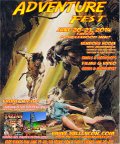


Official Edgar Rice Burroughs Tribute and Weekly Webzine Site Since 1996 ~ Over 15,000 Web Pages in Archive Presents Volume 4507 |

Eclectica Archive |

ECLECTICA v.2014.01 |
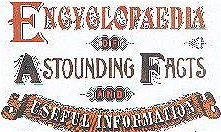
Eclectica Archive |
|
by George T. McWhorter Published by Brian Bohnett's Mad Kings Publishing 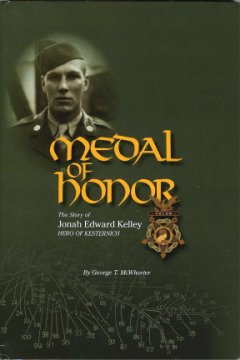 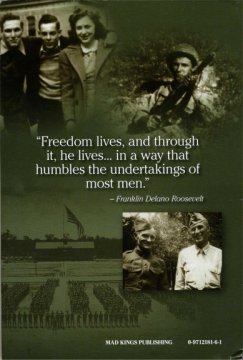
click for larger images For ordering information contact: George T. McWhorter Curator, Burroughs Memorial Collection University of Louisville george.mcwhorter@louisville.edu 502.852.8729 |
|
|
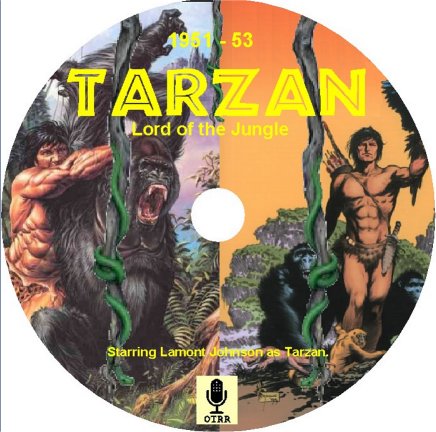
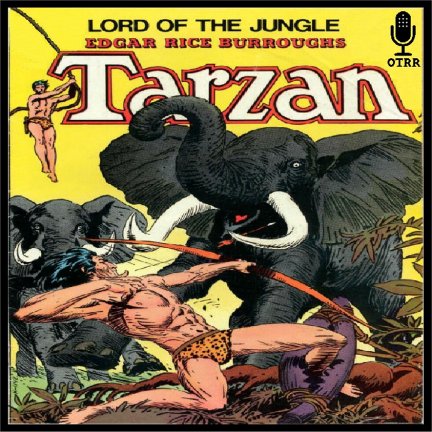
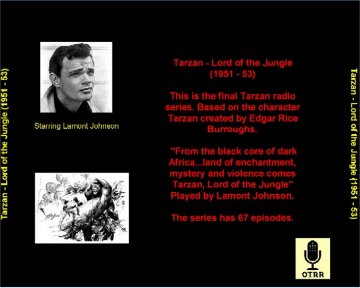
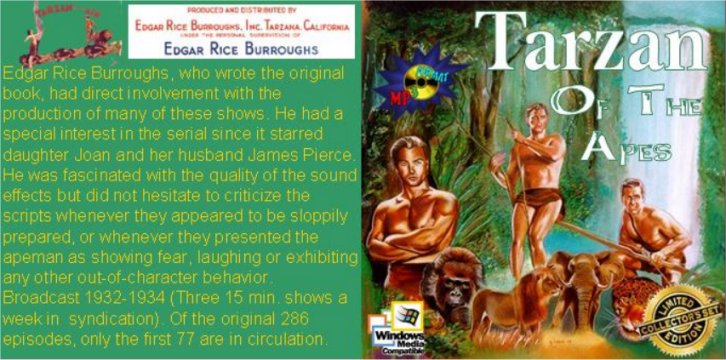
![]()
TELEVISION
![]()
|
Tarzan on Radio www.erbzine.com/mag0/0011.html Tarzan on Television
|
![]()
FILM
![]()
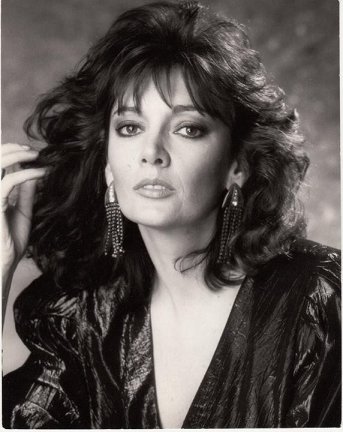
Sarah Douglas: Lady Cunningham in The People That Time Forgot |
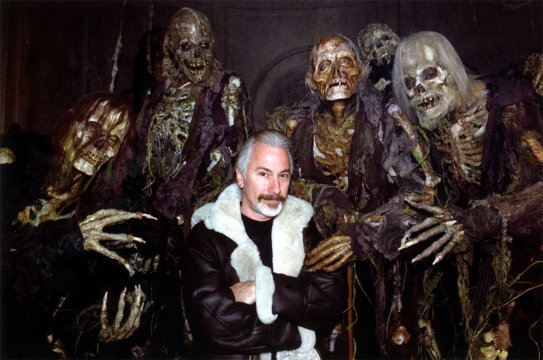
Rick Baker: Creator of the Greystoke Apes and many more weird beings |
|
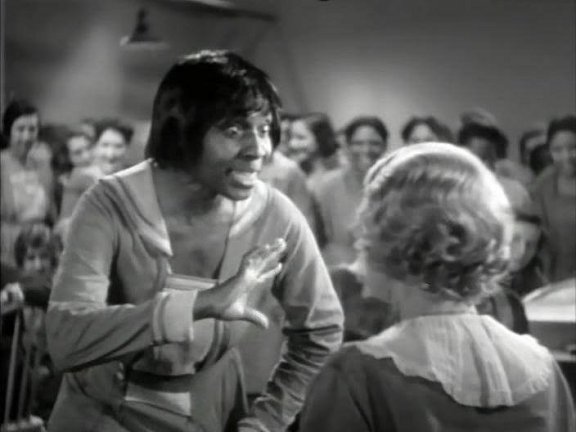
Wikipedia |
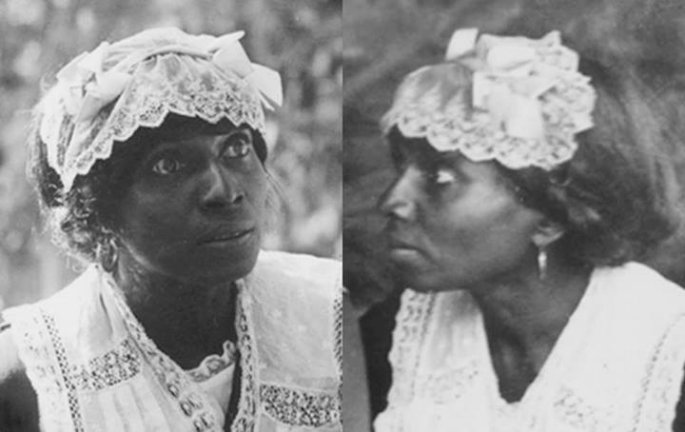
Brian Bohnett Collection |
|
https://www.erbzine.com/mag5/0504.html 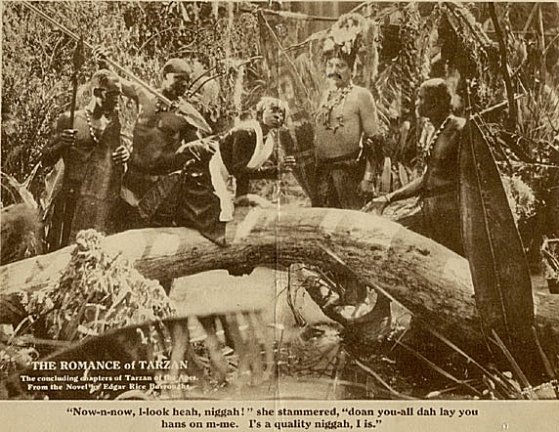 |
https://www.erbzine.com/mag5/0503.html 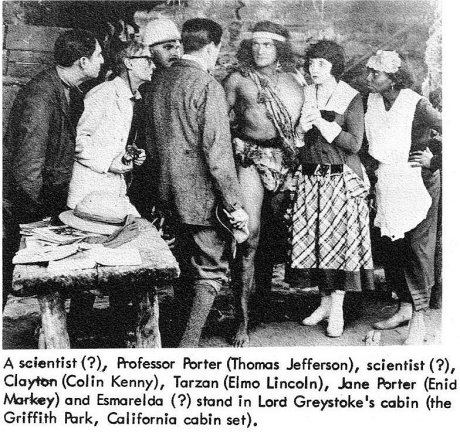 |
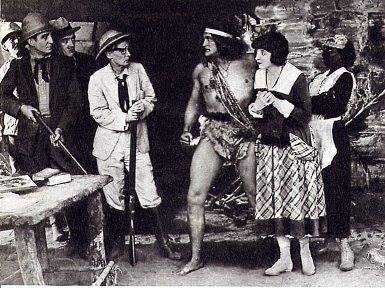
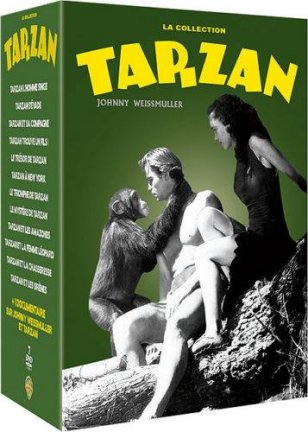
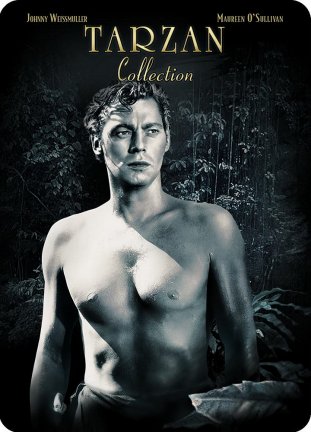
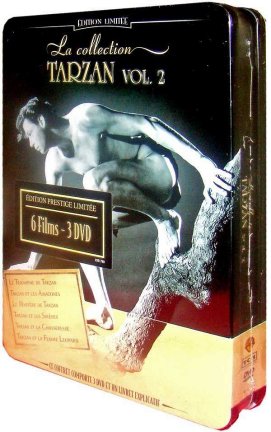
Shirley Temple: Kid in Africa
Pop Culture ~ February 15, 2012Burlesk” series, the ten minute short, “Kid in Africa,” released in 1933, parodies the “Tarzan the Ape Man” movies by telling the story of a young girl, played by Madame Cradlebait, who is determined to civilize cannibals in Africa. Starring Shirley Temple as a missionary, Madame Cradlebait, the short opens with the arrival of the young blonde followed by several young black children who play the role of her servants and carry her luggage (which reads, “Civilize the Cannibals or Bust!”).
Shortly after finding a place to nap, Cradlebait and her servants are attacked by a group of cannibals, portrayed by more young black children wearing face paint, who eventually capture the missionary and put her into a giant pot to prepare her for supper. Luckily, the heroic Diaperzan hears Cradlebait’s cries for help and summons his elephant to ride to her rescue. Diaperzan scares off the cannibals and saves the missionary. Soon after, the jungle has been civilized and a town has blossomed, complete with a traffic controller and a filling station.
Wearing dressy clothes, Diaperzan says he will play golf this afternoon, but Madame Cradlebait reminds him he must wash the dishes. The short ends with Cradlebait having civilized Diaperzan as well, as he wears a frilly, pink apron while being subservient to her.
http://en.wikipedia.org/wiki/Shirley_Temple
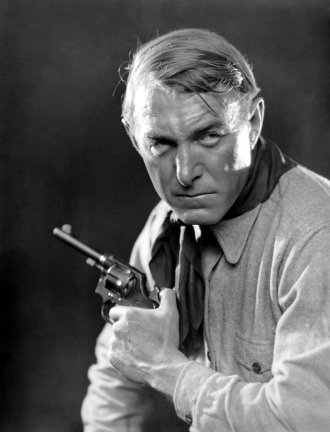 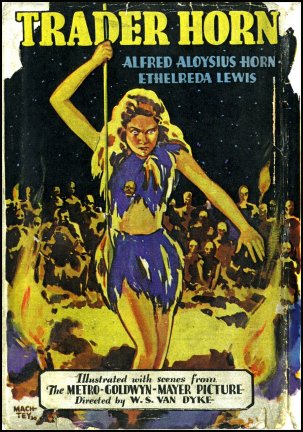 |
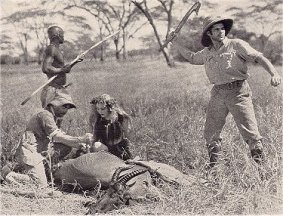
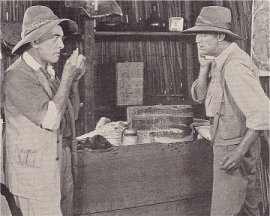 |
|
|
by W. S. Van Dyke ~ 1931 Stills and notes from Trader Horn www.erbzine.com/mag16/1693.html |
![]()
VARIETY REVIEW OF THE NEW TARZAN Tarzan wears his trademark loincloth while the actor playing him sports a full-body motion-capture suit in Constantin Film’s clunky-looking riff on the Edgar Rice Burroughs character, which gives literature’s most organic hero a robotic, pre-“Polar Express” appearance. Targeted at a generation raised on CGI and the idea that men don’t grow body hair, this English-language reboot gambles on big B-movie setpieces, hoping the spectacle will disguise shortcuts taken in the design department. “Tarzan” is an eyesore for anyone above the age of 10 — literally, for those opting to see it in badly miscalibrated 3D — and will lean on heavy marketing for modest returns as it swings through various international territories.
Variety ~ Feb 26, 2013
Edgar Rice Burroughs' hero has seldom looked more primitive,
despite the use of motion-capture, 3D and various other modern gimmicks.In several of Europe’s larger megaplexes, one can presently find 7-foot fiberglass Tarzan standees — broad, muscular shoulders tapering down to a narrow girlish waist atop a pair of delicate long legs — posted like mannequins for the latest in jungle-ready underpants. The fixture in Berlin’s Cubix theater has lost his wig, revealing one of the weaknesses in an otherwise hubba-hubba design: It looks as if someone tried to attach fake hair to the head of a shapely (and fully “man-scaped”) Greek statue, his vacant Ken-doll expression all but incapable of communicating emotion.
This is the Tarzan audiences can expect from the opportunistic German production, animated by Hannover-based Ambient Entertainment, which handled CG African critters just fine in 2010’s “Animals United” and manage the monkeys just fine here, but are clearly out of their depth when dealing with humans. Swooping in before Warner Bros.’ big-budget 2016 relaunch, Constantin acquired the Tarzan rights in 2010 after Disney let them lapse, and their relatively quick-turnaround toon relies almost as heavily on the Mouse House’s idea of the character as Burroughs’ own. Not only does the silhouette evoke that 1999 hand-drawn version, but this is also a more talkative Tarzan than most of his live-action predecessors, with Kellan Lutz (the second Calvin Klein model to play the role, following Travis Fimmel’s smallscreen stint) providing wall-to-wall narration.
But this is no mere origin story. When Lutz says, “Let’s start at the beginning,” he means 70 million years earlier, “when the giant dinosaurs ruled the earth.” Certainly, that makes for a more dramatic opening than even Burroughs’ pulp-primed wits could have imagined, as audiences witness a giant meteor crash-land in the jungle and wipe out the big CG brutes. Cut to the late 20th century, as the Greystoke family arrives in search of a mysterious energy source. Writer-director Reinhard Klooss packs several setpieces into the first reel, serving up a fierce battle between silverback gorillas and the helicopter crash that leaves young Greystoke orphaned.
But there’s a cold, calculated efficiency to the storytelling. The pic hits the obligatory marks — young Greystoke adopted by Kala, swinging through the jungle, discovering Jane Porter (Spencer Locke) and so on — without pausing to make Tarzan seem at all human in the process, which is no small problem given his stiff, all-digital appearance. Visually, the character animation smacks of yesterday’s videogame technology (where motion capture is a more accepted technique), while the fuzzy-looking 3D suggests that scenes designed for HD television sets have been blown up for the bigscreen without the necessary stereoscopic adjustments.
The story circles around to the meteor again, clearly aiming for that same tricky blend of real-world adventure and supernatural danger that the Indiana Jones series rekindled three decades earlier. Tarzan is quick to learn English, though not before pantomiming his way through a classic “me Tarzan, you Jane” scene. Before long, the couple are juggling romance and various eco-pitfalls, with Tarzan swinging through the jungle one moment and running barefoot across snowy mountain tops the next.
The motion capture feels like a stunt, while the stunts … don’t. Physics barely apply, and the thrill of watching Tarzan fling himself through the foliage — even in 3D — hasn’t advanced much since the Disney days. One of the surest signs that not enough attention has been paid to the details is the way that characters’ faces nearly always appear to be in shadows, while the plot — in which Tarzan tries to stop an opportunistic capitalist (Trevor St. John) from robbing the jungle of its most precious resource — seems more than a little ironic. Surely someone at the Burroughs estate must have felt the same way.
Edgar Rice Burroughs’s novel “Tarzan of the Apes,” first published in 1914, has been popular go-to material for filmmakers over the years who have tried to capture the wondrous story of a boy raised in the jungle without any human contact after the death of his parents on screen. The latest effort is an animated motion capture film produced, directed and written by German filmmaker Reinhard Klooss and starring Kellan Lutz of “Twilight” fame lending his voice to Tarzan, and Spencer Locke (“Resident Evil”) as his love interest Jane Porter.

New ‘Tarzan’ Best Left Lost in the Jungle
www.thejakartaglobe.com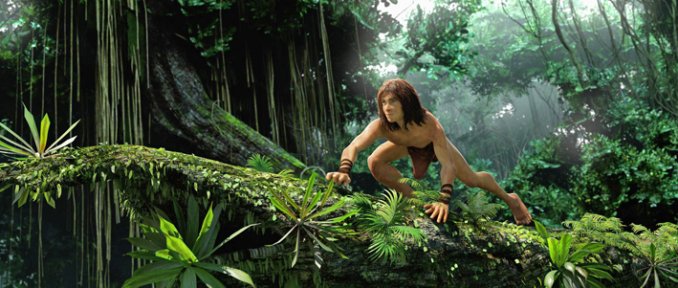
A scene from the animated motion capture film ‘Tarzan,’
now playing in European and Indonesian cinemas.This modernized version of the classic tale adds a science fiction twist to the plot: John Greystoke, Tarzan’s father and a researcher in the African jungle, has dedicated his life to tracing down a mysterious meteor that hit Earth thousands of years ago and which, according to legend, contains unrivaled energy and power. He eventually decides to return to New York with his wife and son, but before they can safely make it home, he and his wife die in a helicopter crash, leaving behind their son who is found by female ape Kala. The gentle primate then raises the boy as one of her own.
The human boy becomes Tarzan, faster and stronger than anyone else in the jungle, and unaware of his human heritage. This changes when he first sees Jane, who has come to the jungle to accompany her father on an expedition. Realizing that he is a human, Tarzan falls in love with Jane. Their newfound happiness, however, is cut short as the evil chief executive of Greystoke Energies, who took over the company after Tarzan’s parents died, is determined to find the meteor in order to get his hands on an unlimited energy source. Tarzan needs to fight in order to protect the woman he loves and save the jungle he calls home.
Comparisons with Walt Disney’s 1999 Tarzan animated movie will be inevitable, and while the Disney version was a humorous, magical ride accompanied by a catchy soundtrack courtesy of Phil Collins, the new film falls short in almost every regard. While the latest technology has provided stunning developments in the film industry in recent years, Klooss’s Tarzan seems to fail at making use of them.
The whole movie looks like a somewhat outdated computer game when it should be thrilling — Tarzan skillfully swinging on vines, for instance, could have made for some eye-catching sequences, yet they seem clumsy and stiff. The most unforgivable thing, however, is that the movie lacks any emotional depth, despite the story line offering up plenty of tension and drama. Even in one of the saddest scenes — Tarzan’s mother Kala gets shot and is left to die — it is hard for the audience to conjure up feelings of loss and sympathy, because they are simply not invested.
When the love story between Tarzan and Jane unfolds — including a scene where they swim together in the ocean to Coldplay’s “Paradise” — it is hard not to feel amused for all the wrong reasons. Children may have a different perception when watching, and will probably get a thrill or two out of it. But as far as adults are concerned, this Tarzan is better lost in the jungle.
Bruckheimer Leaves Disney; Iger to stay until 2016 -- Implications for John Carter? 
Last week Disney announced it was ending its long association with Pirates of the Caribbean (and Lone Ranger) producer Jerry Bruckheimer. Meanwhile over the summer Disney announced that CEO Robert Iger has extended his contract to the summer of 2016. For those not following that closely -- Iger had previously firmly committed that he would leave in March 2015. Coincidentally, March 2015 is three years after the release of John Carter, which we understand to be the date that Disney must release the rights to the series back to ERB Inc, or pay a fee to renew the rights.What are the implications in all of this for the near term and longterm cinematic future of the Martian series of Edgar Rice Burroughs?
And here's the real question.
It's highly likely that Disney will take steps to renew the rights even though, under Iger, there is no intention whatsoever of making a sequel. (Iger is solidly on record as regarding John Carter to be a failed enterprise not appropriate for consideration as a series.) Renewing the rights would be a purely defensive measure, to keep the franchise "off the market" while DIsney is re-establishing Star Wars.
The question, then, is this: What position should the many fans and stakeholders in the ERB Literary property take? Are there actions that fans can and others can take that might affect Disney's decision? If so, what?
![]()
JOHN
CARTER FROM MARS DECODED
http://www.youtube.com/watch?v=4mkmgWWhwFw
|
See the in-depth coverage of tall the ERB-related films at: www.ERBzine.com/movies or www.erbzine.com/mag5/0502.html and JOHN CARTER OF MARS www. cartermovie.com |
FILM HISTORY FROM THE NETHERLANDS
Source: Jos Verspeek (expert on magic Lanterns)
In the 1950's there were three different 35mm films made.
Those are :
Tarzan en zijn Vijanden (Tarzan and his enemies)
Tarzan Wint (Tarzan Wins)
Tarzan knapt het op! (Tarzan takes care of it!)
From these titles there are three variations known (brands):
The brand Real, Funny and one without a brand.
The last one produced the same stories only with Jungle
Jim in the title,
Tarzan still plays the main person. Also Sungle Sim has
been found..
Packaging:
Real : Blue and red square boxes. Later also transparant
round case, label on the cap or on front of the box.
Real Giftset : Blue Long box (10cm long) with 3 holes
in the bottom for the film cases.
Funny : Yellow square box with label on the cap
Merkloos : Ash-Gray colored cheap square box with red
outlining with unfoldable cover.
It is also possible that the films were produced in Enschede
but Jos Verspeek thinks that Movie-Tone only duplicated
the films.
There is no information about the artist.
www.hollandmeetserb.nl/erb/CollectiblesToverlantaarn1950_en.html
![]()
|
|
|
An additional little collectible card with the secret language of Tarzan, is included in every box. Sold by BSV in Germany in the '70s |
|
The Museum of the Netherlands -- in Amsterdam www.hollandmeetserb.nl |
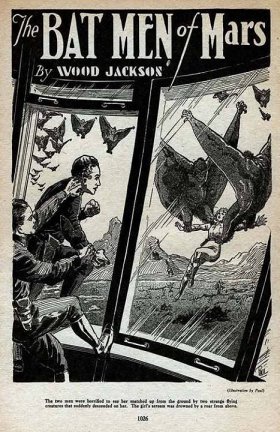 |

A curiosity piece |
![]()
Rare Ernie Mayne record for sale : Tarzan
of the Apes
![]()
An Outlaws of Torn proclamation... To all great knights of the castle Torn:
www.erbzine.com/mag45/4538a.html
The sale of Francis of Westwood’s Edgar Rice Burroughs collection has now been concludedAfter travelling to the realm of Seven Kings on no less than eight separate occasions, cataloguing the majority of Francis of Westwood’s collection, organising it in such a way that those attended the sale would have free access to it all, and then finally finding a buyer to take the remainder, it has for this weary and saddle sore traveller, been a long road and very glad that it is now
over.The initial sale organised for January 25th 2014 began with the arrival of Philippe Badre and his colleague, Richard from neighbouring France, along with John and Maureen Davey who were hopeful in purchasing certain items for David Britton who was unable to make the journey himself. Others quickly followed in the guises of Martin Smiddy, Paul Mallinson, Scott Herbertson (on behalf of his brother Craig) and finally Tom Rookes. I thank every one of them for making the journey and a success of the day it was.
As the day progressed, piles of books, comics, movie memorabilia and other assorted items began to be set aside for purchase. Despite the desire to find some new treasure to behold, everyone took the time to reacquaint themselves with old friends and make new ones.
At the centre of this hive of activity was Doreen who had seen Francis build up his collection over the past 40 plus years. It was a time of both sadness and happiness. Sadness that this event was taking place because Francis was no longer in our midst and his collection was being broken up, but happiness in seeing old friends again and the collection going to places where they will not just be cherished, but looked upon as a reminder of their old friend, Francis of Westwood.
The sale day over, the dispensing of the remainder of the collection began. Doreen had two visitors who came to see what remained but both decided that it was too much to take on. Over in France however, Philippe and Richard made their bid that was acceptable to Doreen and are now busy making arrangements to transport everything across to Europe.
The events of recent months should be a reminder to us all that though our collections are a major part of our lives, a contingency needs to be made by each of us to make arrangements of what should happen to our treasures when the day comes, that we ourselves should take that final pilgrimage down the River Iss. Doreen has been fortunate on this occasion that friends of Francis were on hand to relieve her of this burden. Others may not.
Take heed good knights and ride strong for many years to come.
Respectfully yours
Laurence G. Of Dunn
|
REMEMBERING FRANK WESTWOOD www.erbzine.com/mag45/4538.html and Reprints of Franks famous Fanzine FANTASTICE WORLDS OF ERB www.erbzine.com/mag48/4813.html www.ERBzine.com/westwood |
|
|
Barsoom Daily News In “Advanced Readings in D&D,” Tor.com writers Tim Callahan and Mordicai Knode take a look at Gary Gygax’s favorite authors and reread one per week, in an effort to explore the origins of Dungeons & Dragons and see which of these sometimes-famous, sometimes-obscure authors are worth rereading today. Sometimes the posts will be conversations, while other times they will be solo reflections, but one thing is guaranteed: Appendix N will be written about, along with dungeons, and maybe dragons, and probably wizards, and sometimes robots, and, if you’re up for it, even more. Welcome to the fifth post in the series, featuring a look at the beginning of the John Carter series by Edgar Rice Burroughs.
Advanced Readings in D&D: Edgar Rice Burroughs
Tor.comA Princess of Mars
Tim Callahan: When we stared down the Edgar Rice Burroughs canon, we tossed around the idea that maybe we’d do a read of Pellucidar, to get into the Hollow Earth mythology, or maybe we’d do Carson of Venus to highlight one of his less-well-read series of books. Interestingly, neither of us ever threw Tarzan into the mix, and I suspect that’s because Tarzan is too much a part of the culture. Too well-trodden. Too likely not to surprise us. Though I understand that the later Tarzan books get pretty crazy. I don’t know, I haven’t read them, and I’ve only read comic book adaptations of the first book, so that probably tells you a lot about me, and not in a good way.
But we settled on A Princess of Mars, the first of the John Carter books, because it’s such a seminal work, and so hugely influential to the space opera genre and the swordfightin’ fantasy genre, and it was turned into a movie last year that was pretty disappointing in too many ways.
Not that we’re here to talk about the movie, but I’m sure it will come up, because it just did.
So A Princess of Mars, the classic novel? What do you think of it? What makes it worth reading? Is it worth reading?
Mordicai Knode: Well, I have to say; the first time I read A Princess of Mars I thought I was just sort of “paying my dues.” You know, going through the classics of the fantasy canon and giving them a shot. My expectations were pretty moderated; some classics really deserve their accolades, but I find a lot of them aren’t my cup of tea. These John Carter books...mwah! Magnifique! I really think they are the bee’s knees, and you know what else? I think a lot of modern criticism of the books—notably racial ones—are not just dead wrong, but that the Barsoom series is actually pretty great on the subject of race. Not perfect by any means, but especially given its position in history, I think the explicit moral of the story is a call for pluralism and tolerance.
I might be jumping the gun on that, so let me start with this. There are giant green aliens with four arms and tusks that lay eggs, are mildly telepathic, and have guns that shoot radium bullets which explode when light hits them. Come on, right there, that is enough of an elevator pitch to get me interested...and we’ve barely even scratched the surface. I haven’t even talked about John Carter’s suite of Superman powers or the anti-gravity properties of the Eight Ray, or the Oxygen Station that Total Recall borrowed as its MacGuffin, or the secret cults or weird critters of Mars. So...I guess what I’m saying is heck yes it is worth reading!
TC: I was astounded by the thrilling pace of the novel, and I love that the book begins with that Civil War-era framing sequence, so you really get the clash between the dusty archetypes of the old west and the operatic space adventures on Mars (ahem, Barsoom).
It’s also a book that manages to balance Burroughs obvious intelligence with the needs of the readership. The book isn’t quite the equivalent of a popcorn flick, even though its trappings may be outlandish and action-packed and visually extraordinary. Instead, it’s a smartly written planetary romance about a hero in an alien land.
Maybe that was the problem with the recent Disney movie version. Burroughs’ voice was missing, even if many of the plot elements were maintained. And without Burroughs’ voice—or with it, but only in a laborious cinematic framing sequence that didn’t have the charm of the novel—the spectacle remains, and we’ve seen plenty of spectacle in the years since this book was written.
A Princess of Mars came out in 1917! I can’t even imagine what it must have been like to read it back in those days.
MK: Seriously, reading this book when it came out must have turned your brain into a puddle that dribbled out your ears. No wait, better metaphor: it must have blown your mind so hard that your head popped off and became a Kaldane. Though you know, I liked the movie—I did find it to be a popcorn flick, but I thought it was a fun one. It isn’t going to enter my top ten or anything, but I was really confused by the drubbing it took, both at the box office and critically. I thought it was pretty, and I was entertained throughout, as was my wife, who doesn’t care about John Carter. I think the misstep was in smashing up the stories too much; adding the Therns was a nice touch, but adding a giant crawling mechanical city...well, that was where the plot convolutions starting impacting the suspension of disbelief.
The frame sequence! So...well, so weird. No, scratch that, Weird, capital W, as in the genre. So John Carter... So let me get this straight, John Carter...is immortal? They hint at it more than a few times, but what the heck is going on with John Carter? He’s an immortal warrior—it is his true warrior spirit that draws him to Mars, the planet named after the god of war—who keeps dying, and every time he dies he switches planets? From Earth to Mars, from Mars to Earth? That is...that is the sort of craziness inspired by genius; that is a Big Idea and the fact that it is just the framing device goes to show just how deeply and systemically weird the John Carter books are.
TC: Woah, that is weird. I’ve always appreciated the way the frame story provided a gritty, six-gun context for spacefaring swordsmanship, but I never spent much time thinking about the implications of his traveling soul and potential for immortality. Then again, I’ve never read any of the other books in the Barsoom series, so perhaps that stuff is emphasized more in later volumes.
Or maybe I’ve always just been distracted by the courtly heroics around Dejah Thoris and the fact that Tars Tarkas is just one of the coolest characters in the history of English-language literature. I mean, he doesn’t feature on that many pages, considering everything in the novel, but who’s better than Tars Tarkas? He’s like Han Solo and Conan all rolled up into one Martian package.
MK: I totally agree about Tars Tarkas...which I think brings us into a position to talk about race a little. First, a word on genderpolitik in here—no, it ain’t good. Dejah Thoris is pretty much a damsel and pretty high up on a pedestal. That said, there isn’t, you know, anything gross on display towards women here, just the kind of “fairer sex” tropes endemic to society at the time. I don’t want to condone that just because it isn’t blatantly offensive—the absence of real female characters with agency is a problem on its own—but, well, it isn’t offensive. Which, dealing with some of these pulps, counts for something when viewed in historical context, while at the same time failing in a larger framework. I don’t want to let it off the hook for that.
On the topic of race...well, I have read past the first book and besides the Green Martians—the aforementioned four armed giants—there are the Red Martians, who look like humans with red skin and are effectively immortal. The White Martians, Yellow Martians & Black Martians are all like the Red—that is, humanoid and long-lived. The first three books—the “John Carter trilogy” if you will—are about how John Carter unites all the races of Mars, becoming the eponymous Warlord of Mars. It is explicitly a message of how the different tribes of Mars have far more in common than dividing them, and how rejecting bad leadership, superstition, tribalism and old hatreds can result in a better, tolerant world.
I mean, that is right there in the text. That is actually the arc of the story; some White Martians are bad, some Green Martians are bad and so on, but some members of each Martian race good, also. I can understand people who see the Green Martians as a thinly veiled allegory for racial prejudice about Native Americans, and I don’t really disagree with John Carter as a manifestation of the Great White Hope—your Dances with Wolves or Avatar style white man who “saves” primitive people—but I think the fundamental message of the series undercuts that. At the end of the day, it reads like a screed of racial acceptance.
TC: But isn’t that racial acceptance only the result of the white savior? I’m only going by what you tell me here, because I’ve never read the later books, but I’m not sure you’ve convinced me that it’s all that different from Dances with Wolves, except...better.
And maybe this isn’t the place to get into it, but if we want to tie it back into Dungeons & Dragons, which is always in the background of our discussions, the racial politics of the Burroughs books aren’t all that different than what we see in early versions of the game, where there’s plenty of racial diversity (Dwarves, Elves, Hobbits...I mean Halflings) but the Humans (always portrayed as white people in the illustrations) are the only ones without class restrictions and level limits. The implicit message is that all races can and should work together, but Humans are the best! Those kind of racial restrictions were removed in later editions of D&D, but they seem not dissimilar from the kinds of stories we see in the Barsoom series. Or so you tell me.
MK: The elves and dwarves and what have you are white too in most of the classic—and non-Pathfinder modern—illustrations, too, for that matter, which I talked about in my Modest Proposal post. That said, I generally find that the mechanics of species in D&D are sort of self-selecting; humans are the norm in a campaign setting, but I haven’t found them to be the norm in actual adventuring parties, you know what I mean? Everybody grab-bags and monster mashes, playing anything from halflings to...well, my last 3.5 character was an astral deva. I think the problems with orcs and other monstrous humanoids—which I also talked about on Tor.com—are much more problematic, and mirror a lot of the concerns I have with the Tharks. That is what I mean when I acknowledge the Great White Hope problem of the books; totally real and I don’t want to ignore it, but it is in a context of a paean for racial harmony, which tempers it. Plus the books are—did I mention this already?—freaking awesome.
TC: I acknowledge the paean for racial harmony and I accept the awesome. Oh yes, I do.
|
|
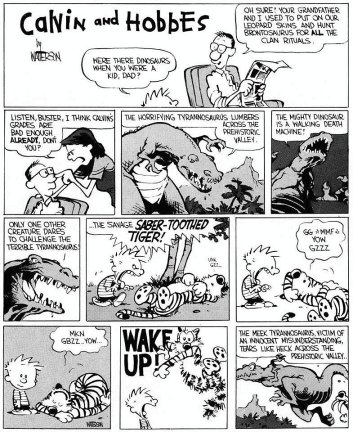
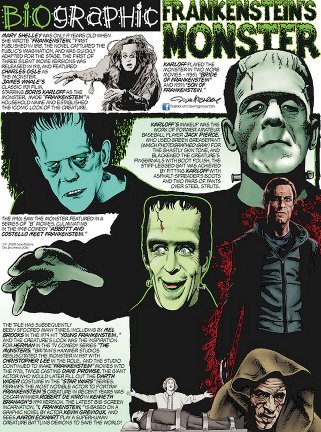

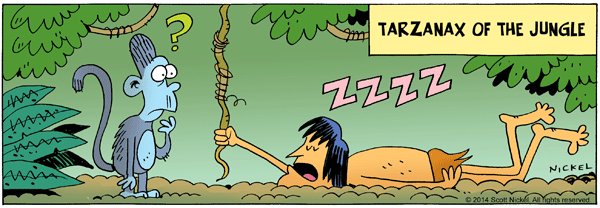
![]()
. . . AND JOHNNY
![]()
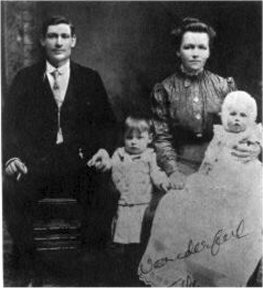
Johnny Weissmuller Family (JW centre) |
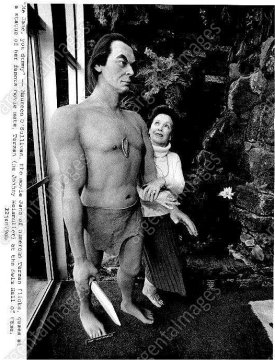
Johnny in Wax |
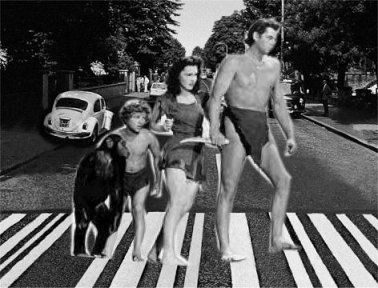
From Eytan Wronker
![]()
![]()

![]()

BILL
HILLMAN
Visit
our thousands of other sites at:
BILL
AND SUE-ON HILLMAN ECLECTIC STUDIO
All
ERB Images© and Tarzan® are Copyright ERB, Inc.- All Rights Reserved.
All
Original Work © 1996-2014/2023 by Bill Hillman and/or Contributing
Authors/Owners
No
part of this web site may be reproduced without permission from the respective
owners.